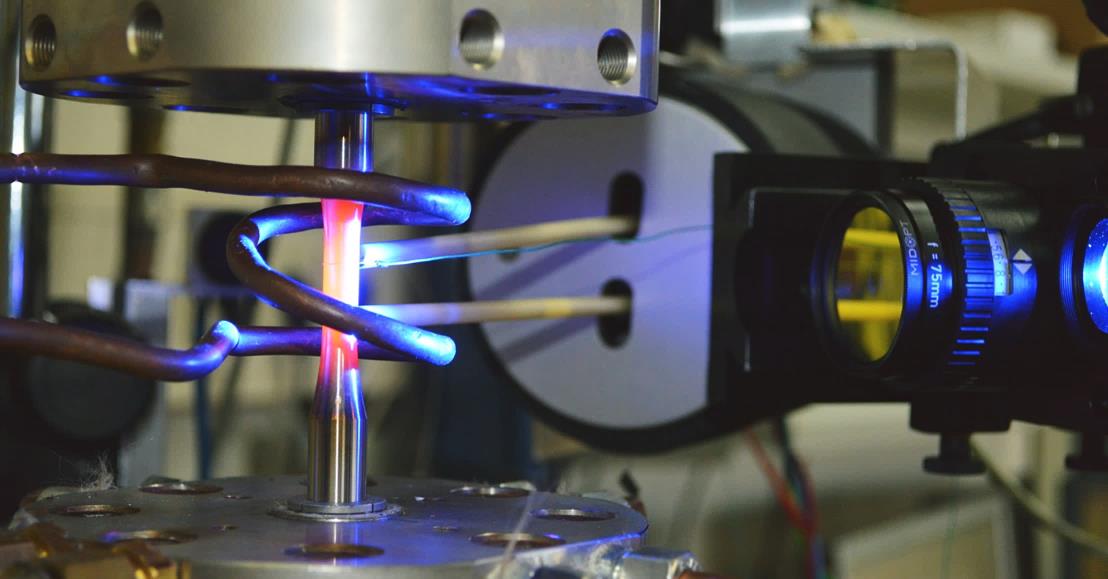Optical strain measurement
Fast, contactless strain measurement procedure for materials under heavy thermal and mechanical load
Materials for lightweight engineering and high-temperature applications first have to be certified so that they can be used to the best possible effect. The fatigue tests required for this can now be carried out with a newly developed optical strain measurement system with significantly faster test frequencies without the use of conventional contact measuring systems, which can cause unwanted damage to the test body.
High-performance materials improve the function and extend the area of use of machines and systems, for example in lightweight engineering and high-temperature applications in the automobile industry, power plants and aircraft engines. But components based on high-performance materials always have to be certified to ensure the resilience and safety of the subsequent product. In connection with the mechanical properties and lifetime behavior, for example, this is done with high-frequency fatigue tests under cyclical, recurring loads. But these measurements place heavy demands on the measurement speed of the strain measurement systems used. Now researchers from the Fraunhofer Institute for Mechanics of Materials IWM and the Fraunhofer Institute for Physical Measurement Techniques IPM have succeeded in increasing the measurement speeds for contactless strain measurement in the course of fatigue tests by a factor of ten.
Contactless, mark-free strain measurement
Optical strain measurement systems work without contact and thus do not damage the sample. This advantage already holds true for today’s standard optical systems. Until now, however, the big disadvantage has been the slow image processing speed, which restricts the measurement frequency and therefore the control frequency. High measurement rates are a basic requirement for optical strain control and scientists from both institutes are currently working hard on them. High control and measurement frequencies in fatigue tests have only been achieved with tactile extensometers to date: the contact pressure required on the extensometer rods can be in the range of the material loading limit, in particular under test conditions, and lead to unwanted damage to the sample and therefore falsification of the test results. The new optical measurement system uses fast, modern image processing technology to combine the benefits of tactile and optical extensometers: fast, high-resolution cameras reliably capture surface structures on polished samples and use them as natural markers in image processing. This does away with the complex sample preparation work for applying artificial markers.
Analysis with 1000 Hz
With image analysis on graphic cards in parallel, stress can currently already be measured without contact at over 1000 Hz – optical systems with measurement rates up to 100 Hz have only been available until now. The measurement accuracy of the new Fraunhofer stress measurement system corresponds to class 0.5 according to DIN ISO 9513. The size of the image field can be adapted to the testing task so that in future, real-time analysis will also allow strain-controlled tests in the micro and macro range. The optical measurement system also opens up the possibility of other types of image processing analyses in future. The development of damage could be analyzed in real time, for example, or retrospectively. In this way, project partners will obtain more precise measurement data for more accurate predictions of component lifetime.
Back to Assessment of Materials and Lifetime Concepts Highlights
 Fraunhofer Institute for Mechanics of Materials IWM
Fraunhofer Institute for Mechanics of Materials IWM